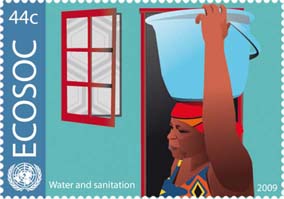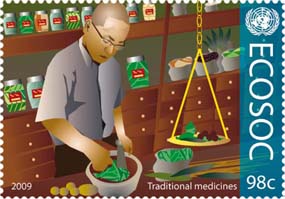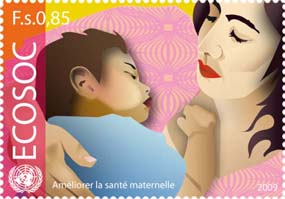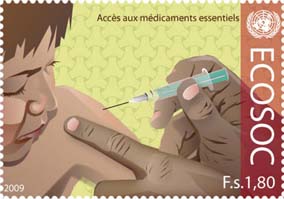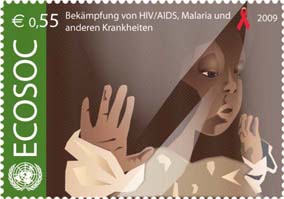Economic And Social Council
(Published: November, 2009, Volume 9, Number 3, Issue #29) (Table Of Contents)(Author: Richard Powers)
This article is reproduced (with formatting changes for HTML viewing) with permission from the
United Nations Philatelists International (UNPI).
This group specializes in all philatelic aspects of the United Nations and has a Journal six
times a year packed with articles dealing with United Nations stamps.
I am a Director and the Webmaster of that club and I recommend checking it out.
On August 6, 2009 the United Nations Postal Administration (UNPA) issued a set of six commemorative stamps honoring the Economic and Social Council (ECOSOC). Under the United Nations Charter, ECOSOC consults with non-governmental organizations (NGOs) concerned with matters within its competence. The Council has fifty-four members, who serve for three year terms. Voting in the Council is by simple majority with each member having one vote.
The card below shows a UN Department of Public Information (UNDPI) photo of a Council session.
The card bears a United Nations, Lake Success machine cancel (Gaines # LS/C.1) dated July 12, 1949.
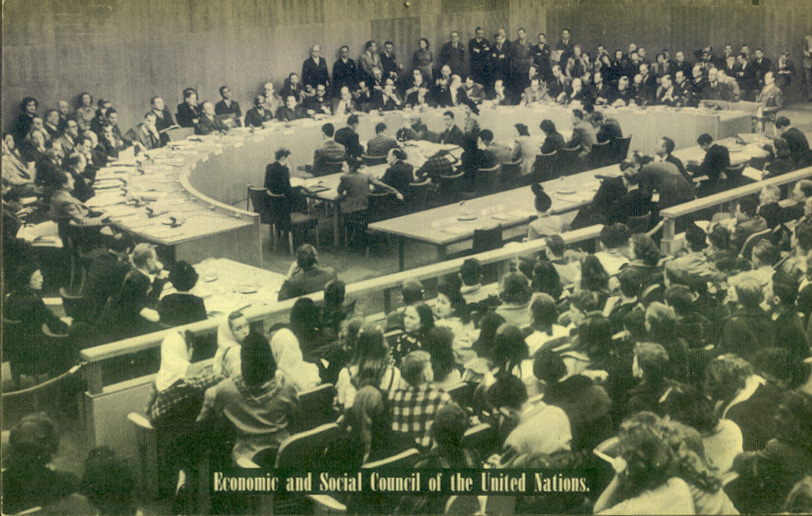
Over 1,500 NGOs (Non-Governmental Organizations) have consultative status with the Council. The Council recognizes that these organizations should have the opportunity to express their views to the Council, and that they possess special experience or technical knowledge of value to the Council's work. The Council carries the responsibility for:
- the promotion of a higher standard of living, full employment and of economic and social progress;
- the formulation of solutions to world economic, social and health problems;
- the promotion of international cooperation in the domains of culture and education;
- the promotion of the universal protection of human rights and basic freedoms.
The designs of the six stamps portray some of these responsibilities.
This is the third time that the UNPA has honored ECOSOC. In 1958 two stamps were released (Scott UNNY #65, #66). This was the first commemorative set for which the UNPA in Geneva prepared its own cachet for a FDC. Unfortunately the early Geneva cacheted envelopes were a bit larger (18 mm x 9.7 mm) than the official cacheted UN Headquarters envelopes prepared in New York (16.5mm X 8.9mm, which is known as a 6.5" envelope). According to Gaines, only 525 of pairs of FDCs of this stamp with singles were sold in Geneva, making this set the rarest of the Geneva FDCs with single stamps. The UNPA Geneva persisted with these nonstandard oversized FDCs (relative to the UNPA New York) until March 1959 when the General Assembly stamps (UNNY #69, #70) stamps were released. In 1980 a series of six stamps were issued: (UNNY #341, #342; Geneva #96, #97; Vienna #15, #16).
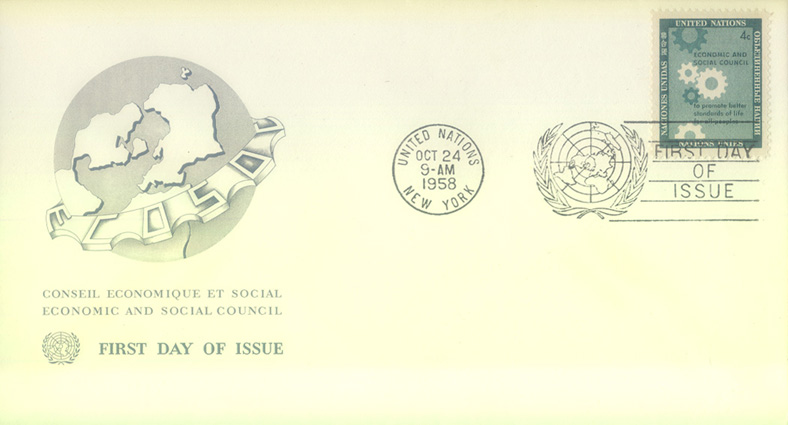
FDC of the 3¢ stamp with Geneva cachet
The locking gear design of the 1958 stamps evokes industrial progress. The 1980 continued this theme with symbols of industrial output, as indicated by the two stamps (#341 and #342) next to the title of this article. The themes of the 2009 stamps relate to health issues. At the World Summit in 2005 the heads of states and governments issued a mandate to the Council to carry out a yearly survey on the ministerial level in order to achieve the Millennial Development Goals in 2015. The field of investigation for the year 2009 is the "Establishment of internationally agreed goals and responsibilities regarding global public health". This theme , which is of overwhelming importance to worldwide communities, should bring together the leading politicians of the world in finding suitable measures for strengthening the world health system to the benefit of all mankind, but in particular for the poorest and the most endangered populations throughout the world.
Reference:
Basic Facts about the United Nations, United Nations Department of Public Information, (New York, NY 1998).


